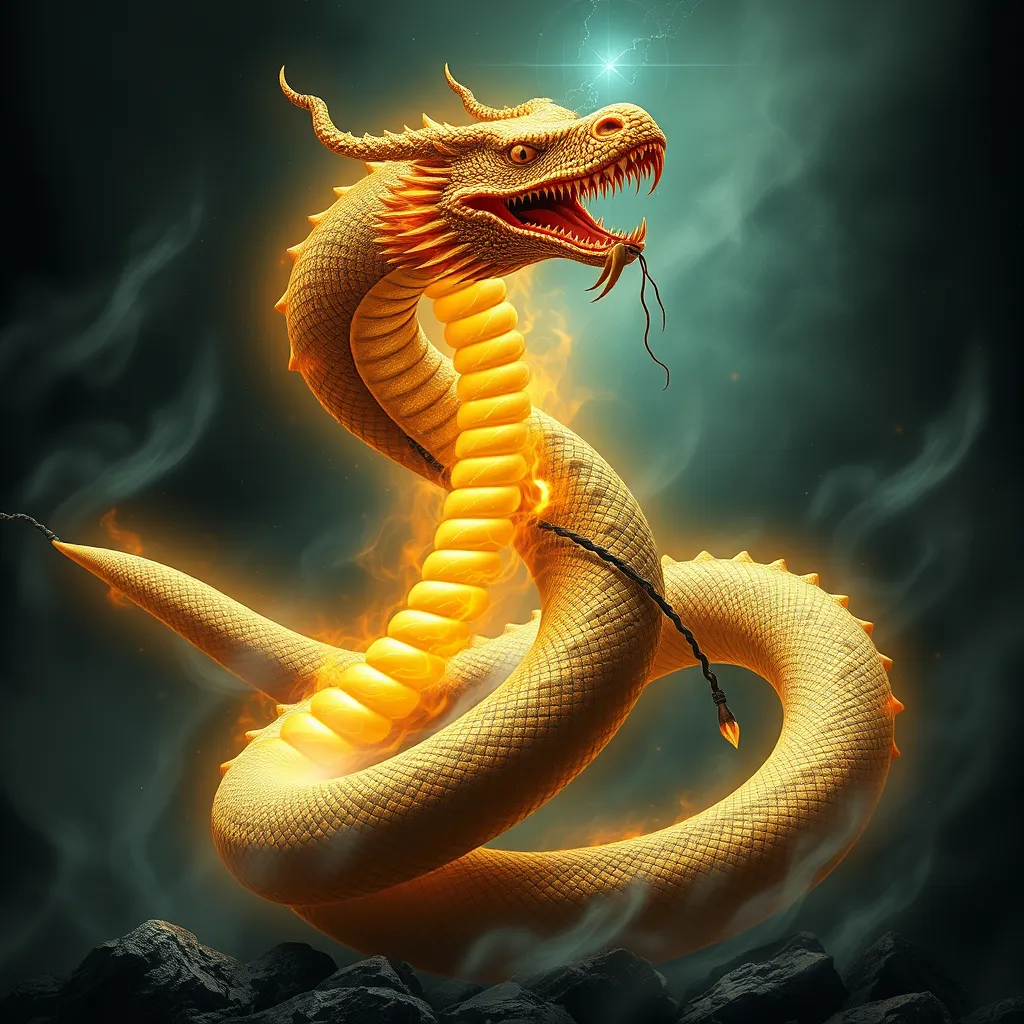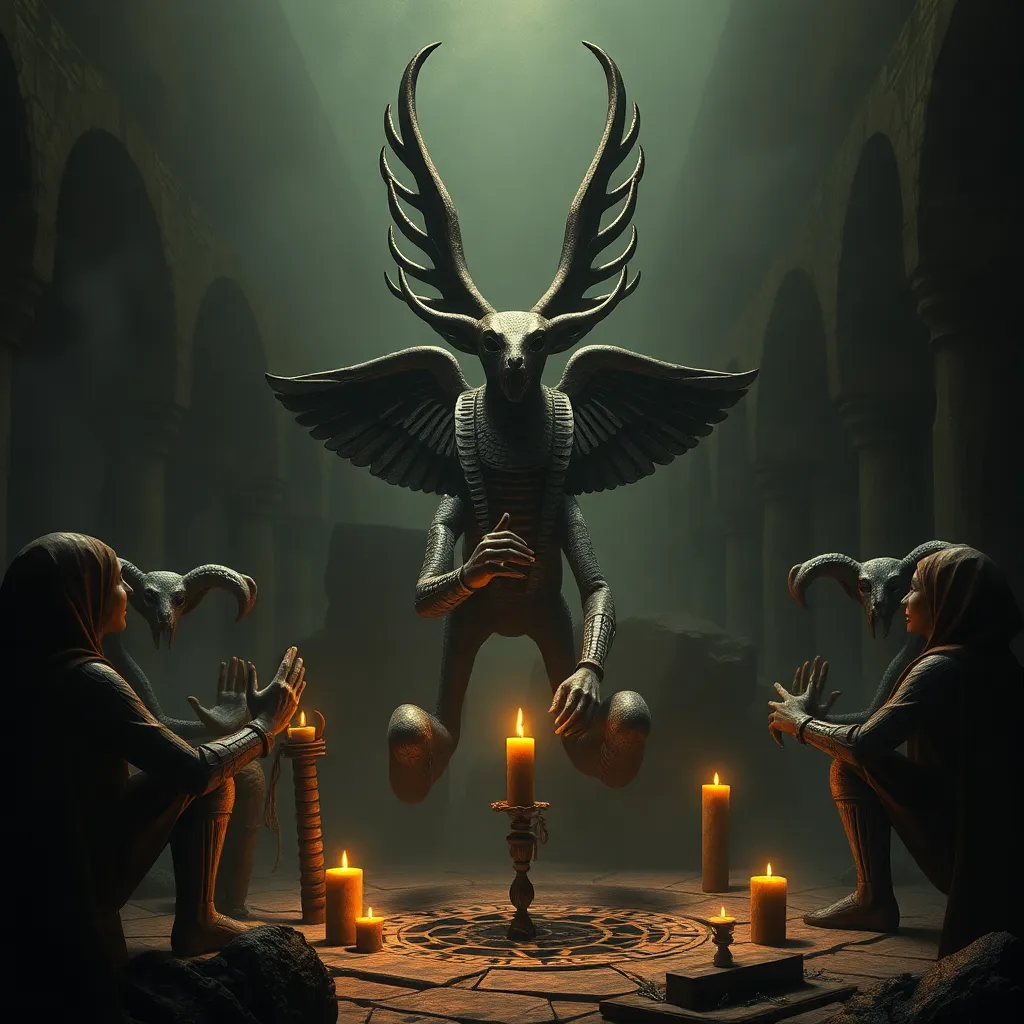The Naga and the Divine: Serpent Deities and their Role in Religious Beliefs
I. Introduction
Serpent deities have fascinated humanity across cultures and epochs, symbolizing various aspects of life, death, and the divine. Their representations often oscillate between benevolence and malevolence, embodying the intricate dualities of existence. Among these divine serpents, the Naga holds a particularly revered position in South and Southeast Asian mythologies, embodying both spiritual and earthly elements.
This article delves into the mythology, symbolism, and cultural significance of the Naga, exploring their roles in Hinduism, Buddhism, and various Southeast Asian traditions. By examining the Naga’s multifaceted nature, we aim to uncover the enduring legacy of serpent deities in religious beliefs.
II. The Naga in Mythology
A. Origins and Historical Context of Naga Mythology
The Naga are often depicted as serpent-like beings, with their origins traced back to ancient Indian mythology. They are considered semi-divine, possessing both human and serpent-like attributes. The word “Naga” itself derives from the Sanskrit term for serpent, emphasizing their close connection to the earth and water.
B. Key Texts and Sources Depicting the Naga
Naga mythology is richly documented in various texts, including:
- The Mahabharata
- Ramayana
- Puranas
- Buddhist scriptures such as the Tripitaka
These texts depict the Naga as guardians of treasure, water sources, and sacred knowledge, emphasizing their integral role in the cosmic order.
C. Cultural Variations of the Naga Across Different Regions
The concept of the Naga varies significantly across cultures:
- In Hinduism, they are often depicted as protectors of the earth and water.
- In Buddhism, Naga are seen as protectors of the Buddha and his teachings.
- In Southeast Asia, local folklore presents the Naga as significant figures in creation myths.
III. Symbolism of the Naga
A. Representation of Fertility, Water, and Earth
The Naga is often associated with fertility and the life-giving properties of water. In agricultural societies, they symbolize rain and abundance, crucial for crop growth. Their connection to the earth further emphasizes their role as custodians of nature.
B. Duality of the Naga: Protector and Destroyer
While the Naga are revered as protectors, they also possess a destructive side. This duality reflects the balance between creation and destruction inherent in nature. They are believed to unleash floods when angered, showcasing their power over water and life.
C. The Naga in Art and Iconography
Naga imagery is prevalent in art and architecture, often depicted as large serpents coiling around trees, rocks, or deities. Notable examples include:
- The Naga sculptures at Angkor Wat in Cambodia
- Traditional Thai murals depicting Naga
- South Indian temple carvings featuring Naga motifs
IV. The Naga in Hinduism
A. Role of the Naga in Hindu Scriptures and Epics
In Hindu texts, the Naga are depicted in various roles, most notably as divine beings and protectors of sacred places. They are often mentioned in the Mahabharata and Puranas, where they interact with gods and heroes, showcasing their importance in the divine hierarchy.
B. Worship Practices and Rituals Associated with Naga
Worship of the Naga involves various rituals, often centered around the Nag Panchami festival, where devotees offer milk and prayers to serpent idols. This practice highlights the reverence for Naga as protectors of the household and agricultural prosperity.
C. The Naga as Guardians of Sacred Sites
Naga are considered guardians of water bodies, springs, and temples. Their presence in these locations is believed to bless the area, ensuring fertility and protection for the community.
V. The Naga in Buddhism
A. Naga Figures in Buddhist Texts and Teachings
In Buddhism, Naga are often portrayed as protectors of the Buddha and his teachings. They are seen as beings that can attain enlightenment, embodying the potential for transformation within all creatures.
B. The Story of the Naga King Mucalinda and its Significance
One of the most famous Naga figures in Buddhism is Mucalinda, the Naga king who protected the Buddha from rain after his enlightenment. This story symbolizes the nurturing aspect of the Naga and their connection to the spiritual journey.
C. Naga Symbolism in Buddhist Art and Architecture
Naga motifs are prevalent in Buddhist art, often depicted coiling around stupas and images of the Buddha. This representation signifies protection, wisdom, and the intertwining of the spiritual and material worlds.
VI. The Naga in Southeast Asian Religions
A. The Naga in Local Belief Systems and Folklore
In countries like Thailand, Laos, and Myanmar, the Naga are central figures in local belief systems. They are often associated with rivers and lakes, embodying the spirit of the water.
B. Influence of Naga Mythology in Countries Like Thailand, Laos, and Myanmar
The Naga mythos influences local culture, festivals, and art. In Thailand, for instance, the Naga is a prominent figure in traditional dance and folklore.
C. Contemporary Practices and Festivals Celebrating the Naga
Festivals such as the Naga Fireball Festival in Thailand celebrate the Naga’s connection to water and fertility, showcasing the enduring relevance of these serpent deities in modern practices.
VII. Comparative Analysis with Other Serpent Deities
A. Similarities and Differences with Serpent Deities in Other Cultures
The Naga share similarities with other serpent deities, such as:
- Quetzalcoatl from Mesoamerican cultures, representing wind and knowledge.
- Jörmungandr from Norse mythology, embodying the sea and chaos.
These deities reflect common themes of power, wisdom, and the duality of creation and destruction.
B. The Universal Symbolism of Serpents in Religion
Serpents universally symbolize transformation, healing, and duality. They are often linked to fertility and the cycle of life, showcasing their deep-rooted significance in human consciousness.
C. The Role of Serpent Deities in Creation Myths and Cosmology
In many cultures, serpent deities play pivotal roles in creation myths, often embodying the primordial forces of chaos and order. They are seen as essential to the cosmic balance, bridging the earthly and divine realms.
VIII. Conclusion
The Naga embodies a rich tapestry of meanings and roles within religious beliefs, symbolizing the profound connection between humanity, nature, and the divine. Their significance in Hinduism, Buddhism, and Southeast Asian cultures highlights the universality of serpent deities in spiritual narratives.
The enduring legacy of the Naga is evident in contemporary practices, reinforcing their relevance in society today. As we explore the complexities of Naga mythology, we gain deeper insights into the interplay between culture, belief, and the natural world, reminding us of the sacredness that lies within the serpentine forms that have inspired reverence across generations.




